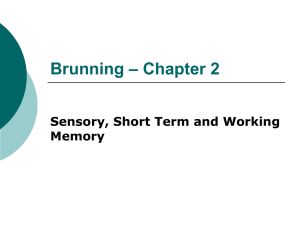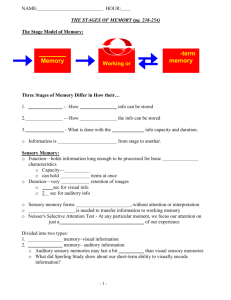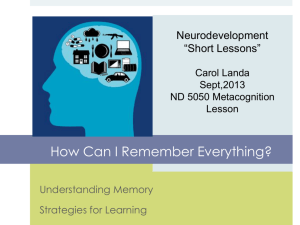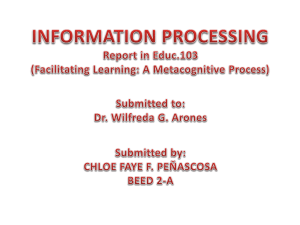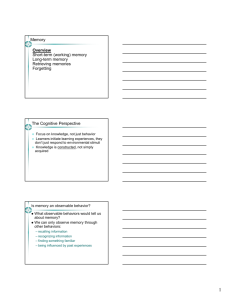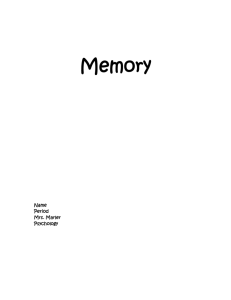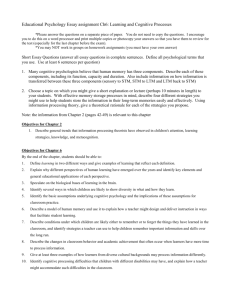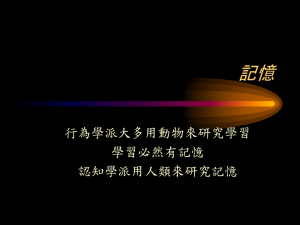Week 8 Memory 1
advertisement
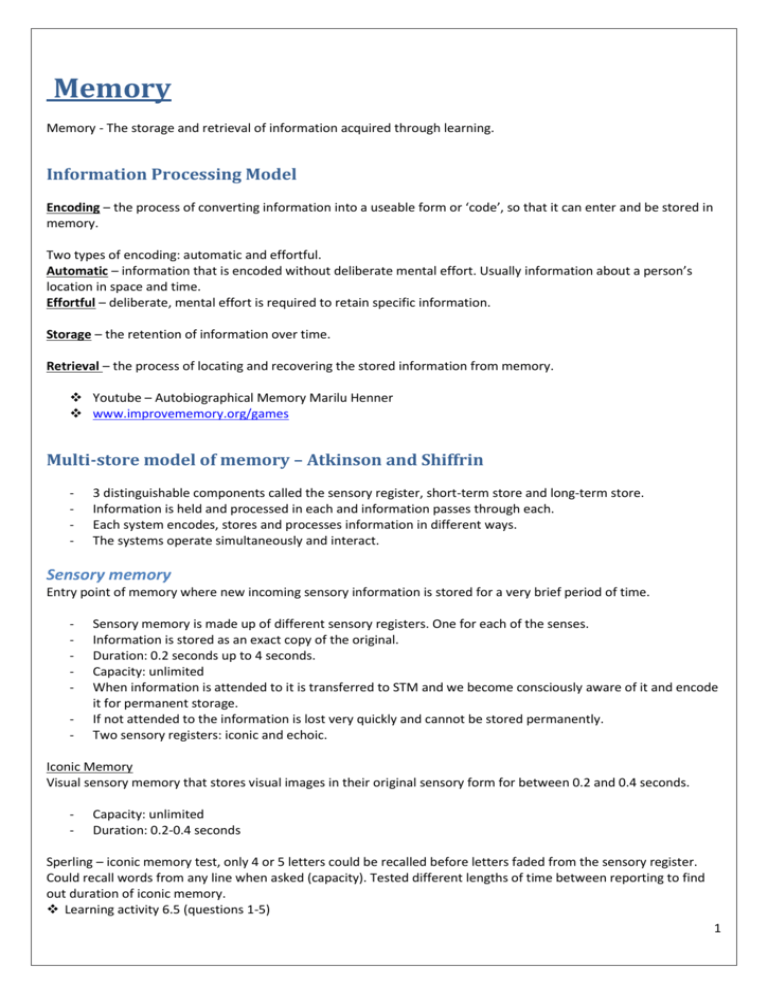
Memory Memory - The storage and retrieval of information acquired through learning. Information Processing Model Encoding – the process of converting information into a useable form or ‘code’, so that it can enter and be stored in memory. Two types of encoding: automatic and effortful. Automatic – information that is encoded without deliberate mental effort. Usually information about a person’s location in space and time. Effortful – deliberate, mental effort is required to retain specific information. Storage – the retention of information over time. Retrieval – the process of locating and recovering the stored information from memory. Youtube – Autobiographical Memory Marilu Henner www.improvememory.org/games Multi-store model of memory – Atkinson and Shiffrin - 3 distinguishable components called the sensory register, short-term store and long-term store. Information is held and processed in each and information passes through each. Each system encodes, stores and processes information in different ways. The systems operate simultaneously and interact. Sensory memory Entry point of memory where new incoming sensory information is stored for a very brief period of time. - Sensory memory is made up of different sensory registers. One for each of the senses. Information is stored as an exact copy of the original. Duration: 0.2 seconds up to 4 seconds. Capacity: unlimited When information is attended to it is transferred to STM and we become consciously aware of it and encode it for permanent storage. If not attended to the information is lost very quickly and cannot be stored permanently. Two sensory registers: iconic and echoic. Iconic Memory Visual sensory memory that stores visual images in their original sensory form for between 0.2 and 0.4 seconds. - Capacity: unlimited Duration: 0.2-0.4 seconds Sperling – iconic memory test, only 4 or 5 letters could be recalled before letters faded from the sensory register. Could recall words from any line when asked (capacity). Tested different lengths of time between reporting to find out duration of iconic memory. Learning activity 6.5 (questions 1-5) 1 Echoic Memory Auditory sensory memory that stores sounds in their original sensory form for up to 3 or 4 seconds. - Capacity: unlimited Duration: 3-4 seconds All sounds 3-4 seconds allows for attention to switch to sounds and transfer information to STM Individual sounds are processed. Parts of speech are heard separately and must be stored long enough for the whole word to be put together to create meaning. Short Term Memory (STM) A memory system with limited storage capacity in which information is stored for a limited time (relatively short period of time) unless renewed in some way. - Capacity: 7 ± 2 pieces of information Duration: 12-30 seconds STM test: http://faculty.washington.edu/chudler/stm0.html Methods to increase STM Chunking The grouping of separate bits of information into larger ‘chunks’. Rehearsal Information can be kept longer in STM if rehearsal is used. Rehearsal is the process of consciously manipulating information to keep it in STM, to transfer it to LTM or aid storage and retrieval. Two types of rehearsal: maintenance and elaborative Maintenance Rehearsal: rote learning, repetitive and keeps information in STM, does not assist encoding for storage in LTM. Information kept in STM through maintenance rehearsal restricts the amount of new information that can enter STM. Elaborative Rehearsal: linking new information in a meaningful way with other new information or information already stored in LTM. Elaborative rehearsal is a more active and effortful process than maintenance rehearsal – important for encoding. Self-referencing effect- relating new information to personal experiences to create meaning and therefore remember it. Learning activity 6.10, page 312 2
